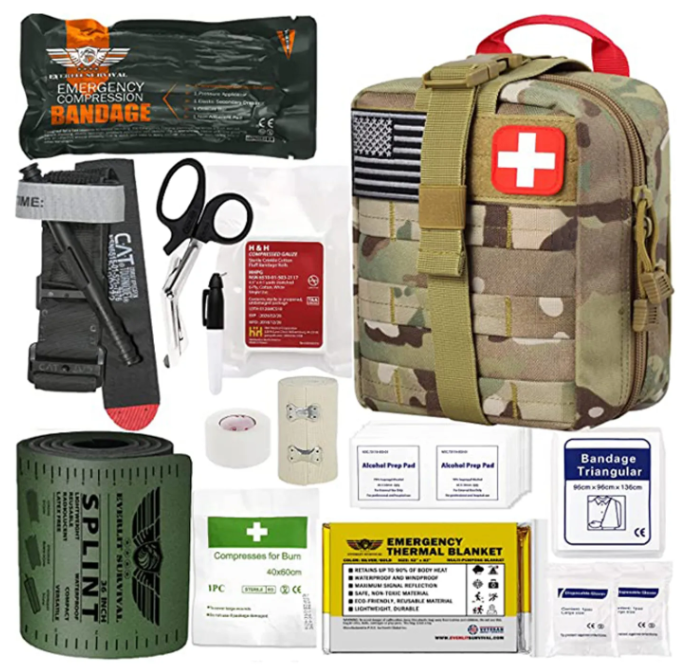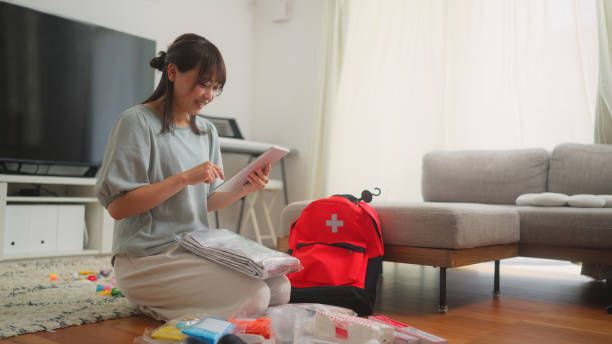
GET A QUOTE
The Difference Between a First Aid Kit and a Bleeding Control Kit
Understanding First Aid Kits
Definition and Purpose
First aid kits are like the Swiss Army knives of medical supplies, designed to provide immediate assistance for a range of injuries and emergencies. They're your go-to for minor mishaps like cuts, burns, sprains, and scrapes.
Contents of a Typical First Aid Kit
Inside a typical first aid kit, you'll find an arsenal of supplies tailored to tackle various injuries. From bandages and gauze to antiseptic wipes and pain relievers, these kits are equipped to handle common medical needs.
Importance of First Aid Training for Effective Use
While having a first aid kit is essential, knowing how to use it effectively is equally crucial. Proper training ensures that you can spring into action confidently when faced with an emergency, maximizing the kit's potential to provide aid.
Examples of Minor Injuries Treated
Minor injuries come in all shapes and sizes, but a well-stocked first aid kit has you covered. Whether it's a small cut from cooking or a sprained ankle from a misstep, these kits offer the essentials for immediate care.
Exploring Bleeding Control Kits
Bleeding control kits are indispensable tools in trauma care, specifically designed to address severe bleeding resulting from traumatic injuries. These kits play a critical role in stemming profuse bleeding and increasing the chances of survival until medical professionals arrive.
Definition and Significance in Trauma Care
Unlike first aid kits, which cater to minor injuries, bleeding control kits are tailored for emergencies that involve life-threatening bleeding. They are essential for providing immediate aid in situations such as gunshot wounds, stab wounds, or accidents resulting in severe hemorrhaging.
Components of a Bleeding Control Kit
Inside a bleeding control kit, you'll find a carefully curated selection of supplies geared towards staunching heavy bleeding. From tourniquets and pressure dressings to hemostatic agents and chest seals, these kits contain the tools needed to address critical injuries swiftly.
Instances Requiring the Use of Bleeding Control Kits
Traumatic events such as motor vehicle accidents, industrial incidents, or violent crimes often result in severe blood loss. In such scenarios, bleeding control kits become invaluable, offering the means to stabilize the injured individual and prevent further harm.
Highlighting the Importance of Quick Action in Severe Bleeding Incidents
Time is of the essence when dealing with severe bleeding. Every moment counts, and swift action can mean the difference between life and death. Bleeding control kits empower bystanders and first responders to act decisively, emphasizing the crucial role of immediate intervention in saving lives.
Key Differences Between First Aid and Bleeding Control Kits
When it comes to emergency preparedness, understanding the differences between first aid kits and bleeding control kits is crucial. Let's explore the key distinctions that set these two types of kits apart.
Scope of Injuries Addressed
First aid kits are geared towards treating minor injuries such as cuts, burns, and sprains, commonly encountered in everyday situations. On the other hand, bleeding control kits are specifically designed to address life-threatening bleeding resulting from traumatic injuries like gunshot wounds or severe lacerations.
Targeted Treatments and Techniques
While first aid kits focus on providing immediate care and comfort for minor injuries, bleeding control kits employ specialized tools and techniques to staunch heavy bleeding. Tourniquets, pressure dressings, and hemostatic agents are among the components uniquely tailored to address severe hemorrhaging in bleeding control kits.
Importance of Situational Awareness in Choosing the Appropriate Kit
Situational awareness plays a pivotal role in determining which kit to use in an emergency. Understanding the nature and severity of the injury is essential for selecting the appropriate kit. While minor cuts and scrapes can be effectively treated with a first aid kit, situations involving profuse bleeding demand the use of a bleeding control kit. Being able to discern between the two ensures prompt and effective intervention when every second counts.
Why Own a First Aid Kit
Owning a first aid kit is a fundamental aspect of responsible preparedness. Here's why it's essential to have one on hand:
Everyday Scenarios Where a First Aid Kit is Indispensable
From minor mishaps in the kitchen to scrapes and bruises during outdoor activities, life is filled with unexpected moments that can result in injuries. A first aid kit equips you to handle these situations promptly and effectively, providing immediate relief and preventing minor injuries from escalating.
Promoting Community Well-being and Preparedness
By owning a first aid kit, you contribute to the safety and well-being of your community. Whether at home, school, or work, having accessible first aid supplies means that immediate care can be provided to anyone in need. This collective preparedness fosters a sense of security and unity within the community.
Encouraging the Importance of Accessibility and Maintenance
It's not enough to simply own a first aid kit; ensuring its accessibility and regular maintenance is equally crucial. Keeping the kit well-stocked, easily accessible, and periodically checking expiration dates of supplies ensures that it remains effective when needed most.
Why Own a Bleeding Control Kit
In situations involving severe bleeding, having a bleeding control kit can be lifesaving. Here's why it's essential to have one:
Addressing Severe Bleeding in Emergencies
Traumatic injuries resulting in severe bleeding require immediate and decisive action. A bleeding control kit contains specialized tools and supplies designed to stem profuse bleeding, providing crucial aid until professional medical help arrives.
Increasing Survival Chances Before Medical Professionals Arrive
In cases of severe hemorrhaging, every second counts. By owning a bleeding control kit and knowing how to use it effectively, you can significantly increase the chances of survival for yourself or others involved in emergencies.
Meeting the Rising Demand for Bleeding Control Kits in Public Spaces
With the increasing prevalence of mass casualty incidents and traumatic events, there's a growing need for bleeding control kits in public spaces such as schools, offices, and entertainment venues. By owning a bleeding control kit, you contribute to enhancing the preparedness and safety measures in these environments, potentially saving lives in critical situations.
Conclusion
The distinction between first aid kits and bleeding control kits is vital for effective emergency preparedness. By understanding the unique roles of each kit and investing in both, individuals and communities can enhance their readiness to handle a diverse range of medical emergencies.
At RisenMedical, we are dedicated to ensuring that individuals and communities are prepared for emergencies with our high-quality IFAK (Individual First Aid Kit) series products.
Explore our widely acclaimed IFAK series, designed to provide essential supplies for immediate care in emergency situations. Choose from our range of products and accessories, or customize your kit to meet your unique needs. We offer OEM, ODM, and OBM solutions to ensure a personalized experience tailored to your requirements.
Prepare for the unexpected with RisenMedical's IFAK series. Order yours today and take proactive steps towards safeguarding lives in any emergency situation.


